Growing email list subscribers can be challenging for many merchants.
In fact, according to Hubspot, email databases decay at a rate of 22.5 percent per year. This is a significant reason as to why growing email list subscribers can be such a difficult task.
People unsubscribe, change jobs (and therefore emails) and family members finally drop that Yahoo! email address they’ve been clinging to for way too long.
There are many reasons as to why email databases continually shrink. Nonetheless, because of this dynamic, it is vital that online retailers are constantly infusing new contacts into their ecommerce email marketing campaigns, thereby pushing business growth forward.
That said, buying email lists is always a bad idea given that such purchases don’t drive real results, cost sellers money, degrade the reputation of the brand, violate General Data Production Regulation guidelines and a panoply of other reasons.
Therefore, merchants must establish a set of effective best practices and strategies for growing email list subscribers that actually want to engage with the business.
That’s what this piece aims to explore.
If your brand is looking for a fresh set of tactics for generating new email subscribers, look no further.
Here are 9 ways for ecommerce retailers to grow their email lists.
1. Create Top-Notch Content
Before retailers engage in any outreach activities for growing email list subscribers, it is necessary to review their previous newsletters and other forms of content that they send.
The fact is that content needs to be absolutely incredible for folks to stay subscribed to the list. The truth is that everyone and their grandmother has an email list today. Given just how common it is for blogs, businesses and other online entities to ask consumers to subscribe to their email list, merchants must send out content that is more than average, greater than good and better than great.
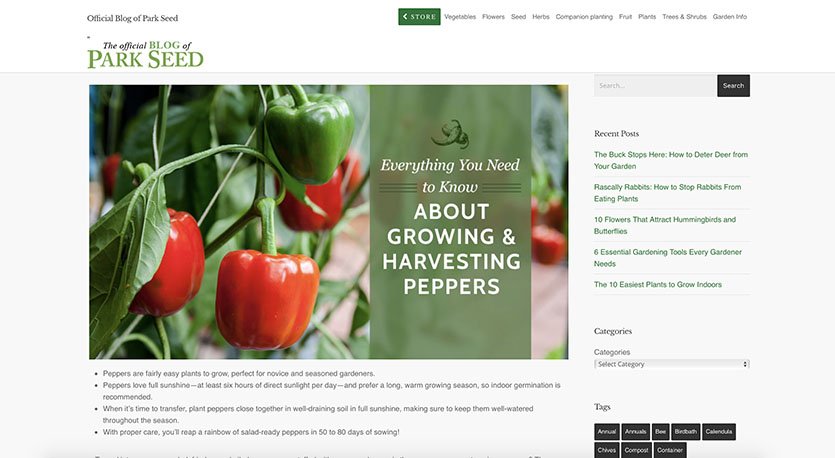
The content sellers send to their subscribers has to be downright incredible. If it is anything less, folks will unsubscribe.
Unfortunately, most content on the web today isn’t incredible. Most of it actually ranges from bad to just okay. So, how can merchants up their ecommerce content marketing strategies?
Firstly, retailers must possess an intimate understanding of their audience, the problems their subscribers face and how to solve those issues.
Therefore, conducting ecommerce market research to better understand email subscribers and their desires is of the utmost importance. Utilizing social listening tools, sending out surveys via email and social media and similar tasks are all essential to figuring out what consumers want to learn about most.
Once merchants establish the topics that their audience wants to read about, it is critical to find a compelling angle on the subject. Much like a movie or a book, finding an exciting hook that connects two or more seemingly unrelated things to make a point is crucial. This is something that writers like Malcolm Gladwell are exceedingly good at doing.
The bottom line is that if retailers want to use content for growing email list subscribers, that content must pack a heck of a wallop. To achieve that, merchants must take the time to uncover what makes content great and practice implementing those principles.
2. Create a Captivating Lead Magnet
A great lead magnet has to provide immense value to a retailer’s audience. After all, email addresses can be a rather personal thing, so giving it away is going to require some serious incentivizing.
Over the years, lead magnets have become one of the most tried-and-true methods for growing email list subscribers. There are a multitude of different kinds of lead magnets, including:
- Videos
- eBooks
- Courses
- Reports
- Checklists
- Spreadsheets
- Templates
- Free Trials
- Resource Lists
However, because of the proven effectiveness of lead magnets, they are ubiquitous. Therefore, much like content, merchants must establish strategies for creating irresistible lead magnets that are unique and cannot be obtained elsewhere.
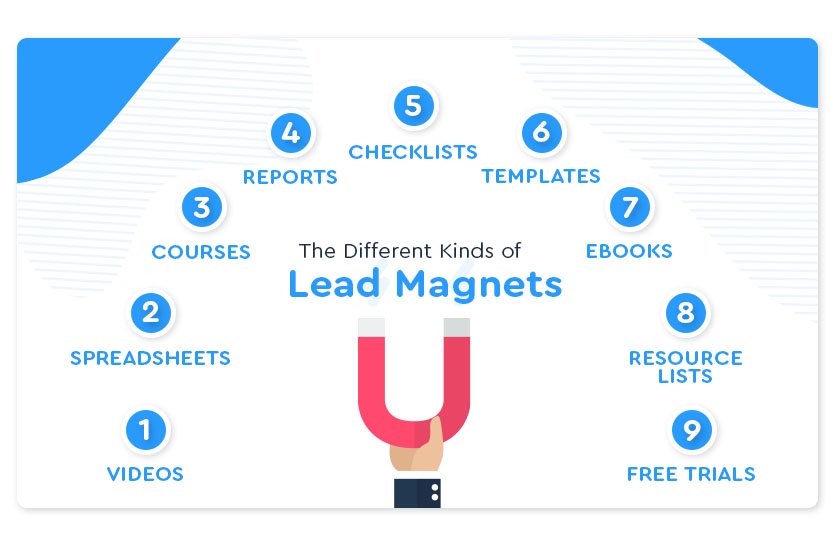
Some tactics that retailers can use to craft a great lead magnet include:
- Presenting ways to solve burdensome emotional problems
- Showing how to address specific issues quickly and effectively
- Making the content easily digestible and actionable
The point here is that if retailers opt to utilize a lead magnet for growing email list subscribers, they must solve a persistent problem the audience faces.
That said, there is another type of lead magnet that merchants can employ that requires far less research and exertion.
3. Deliver a Discount
While a lead magnet like an eBook can be an excellent motivator for earning signups, not all consumers will be interested in this offer.
However, something that nearly everyone is interested in is saving money.
By presenting shoppers with the opportunity to receive a discount or coupon of some sort, sellers can reel in a significant number of signups. Once a merchant hooks in new email subscribers with the promise of a discount, they can increase the chances of that person remaining on the list by delivering awesome content.
Simple. Easy. Effective.
4. Acquire Email Addresses with Facebook Ads
Utilizing Facebook retargeting ads is a popular method for retailers to increase their online sales. However, these social media adverts can also be a great tool for bolstering a brand’s email subscriber list.
Part of the reason for this is that Facebook advertising is a highly effective means of reaching audiences and those who behave in a similar way to those who have previously converted with a business.
However, when it comes to using Facebook to help earn email subscriptions, it is essential that merchants only employ this strategy if they have an established procedure for turning subscribers into paying customers. Otherwise, these adverts can end up costing sellers without producing a substantial return.
That said, merchants can leverage Facebook ads to grow their subscriber list by creating a highly valuable piece of content, lead magnet or special offer (as discussed earlier) and targeting individuals who are likely to be interested in this offering.
Given that Facebook possesses an extremely rich and in-depth ad targeting system, merchants shouldn’t have much difficulty reaching the ideal consumer.
The advert should link to a landing page where consumers can acquire the offer by providing their email address. From there, merchants can send new subscribers the promised offer, along with a welcome series email that aims to convert consumers into paying customers.
However, when designing a landing page that converts, it is critical for retailers to create a signup form that effectively serves this aim.
Which leads us to our next point:
5. Create Streamlined Signup Forms
The fact is that many companies employ lengthy form fields that simply ask users for too much information, especially when the goal is merely to obtain an email address.
When looking at conversion rates data on form fields, it is clear that those that ask for less information are more effective in achieving their goal. As Forbes states, “Companies wishing to increase their conversion rate would be wise to keep their forms as short as possible.”
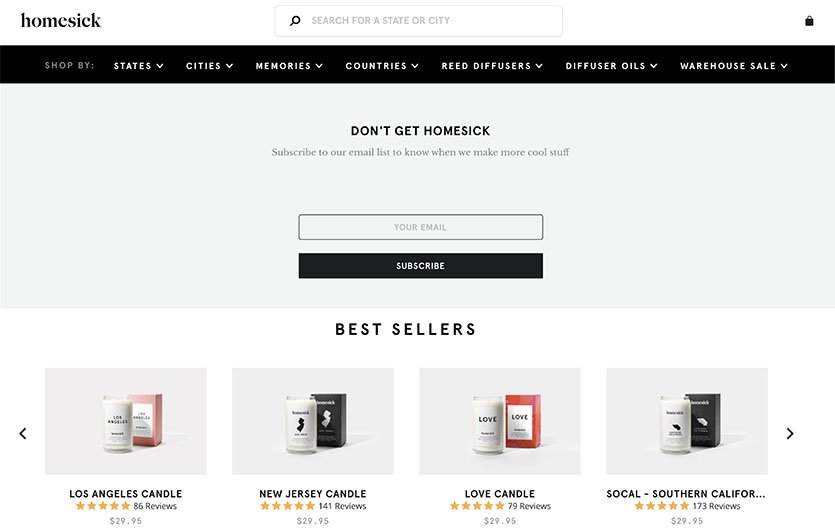
Therefore, the most that sellers should ask for when growing email list subscribers is their first name, last name and email address. In fact, retailers can even limit these fields to first name and email to make things as simple as possible.
6. Use Prominent Pop-ups
Plenty of retailers feature a signup form on their website for growing email list subscribers. However, a considerable number of these sites place the form in inopportune areas, such as the bottom of lengthy blog posts.
Here’s the thing: If the email signup form isn’t in an extremely prominent position on the site, most people won’t find it, thereby limiting the growth of the list.
While above-the-fold placement is a good start to solving this problem, there is an even better solution: Pop-ups.
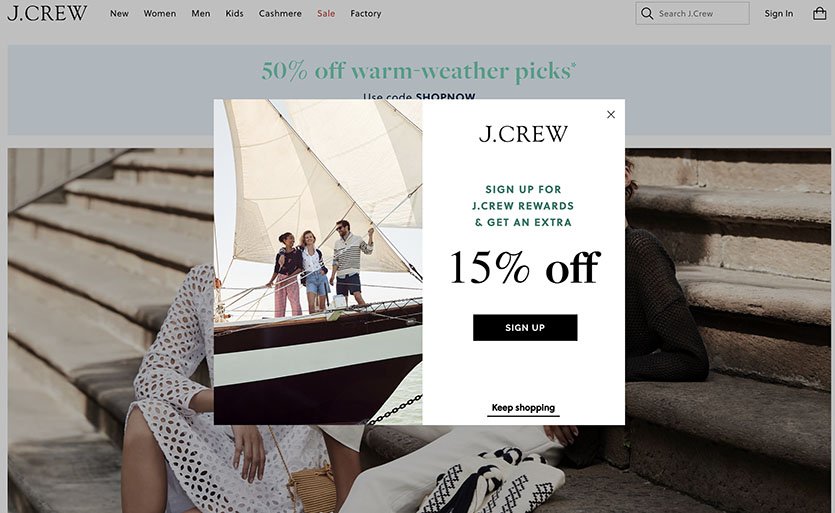
That said, there is plenty of advice online saying to avoid the use of pop-ups because they are annoying, intrusive and the like. Frankly, we won’t dispute the idea that pop-ups can be bothersome and sometimes irritating.
It’s true.
But what’s also true is that they work for earning email signups. This is why most of the biggest information sites on the web use this strategy to gain subscribers. When looking at statistics on pop-up advertising, Sumo reports:
“Some pop-ups see conversion rates as high as 50.2 percent! But the average conversion rate of the very best pop-ups was 9.28 percent. To put that into perspective, if you get even 150 visitors per day to your site, you’d have 418 signups in a month… The average pop-up conversion rate is 3.09 percent. Most pop-ups fall into this category… So, while 3.09 percent might seem small, imagine you have 100,000 visitors on your site. That turns into over 3,000 subscribers. That makes the 3.09 percent average seem alright in retrospect.”
Considering this information, pop-ups are an excellent strategy for growing email list subscribers. Additionally, retailers can curb the annoyance factor of this strategy by using tactics such as:
- Triggering the pop-up after 30 seconds, instead of instantly
- Triggering pop-ups based on exit intent
- Triggering pop-ups after 50 percent scroll
While pop-ups certainly aren’t the most desirable strategy, their effectiveness cannot be denied.
7. Ask Subscribers to Share Emails
Assuming that sellers are sending out remarkable content (as discussed earlier), they have earned the right to ask people to pass it on to their friends.
However, the only way to actually get folks to share emails reliably is to ask.
This principle is displayed on YouTube on a daily basis, with creators asking folks to “smash that like button and share this video on social media.”
Therefore, simply including a humble request at the end of an email can get recipients to spread the content to their network, thereby growing email list subscribers. This ask can be as simple as saying, “If you enjoyed this content, forward it to someone that you think would benefit from it, too!”
The plain fact is that people share content because it’s good. If a company has gone through the trouble of crafting the best content possible, taking the extra step to ask subscribers to help spread the message should be a given.
8. Use Social Media Content to Drive Signups
Social media marketing is an integral component to succeeding in digital retail. Moreover, video content and podcasting have become extremely popular among online users. Naturally, most retail businesses have integrated one of these (or both) into their social efforts.
However, as most learned with the massive decline of organic Facebook reach that accompanied an algorithm shift a couple of years back, retailers cannot be completely reliant on these platforms for engaging with audiences.
Given that social platforms can effectively cut off businesses from their followers at the flick of a switch, it is wise for retailers to use their content to grow their email list.
By utilizing content like optimized YouTube videos that are already engaging a brand’s audience and earning views, sellers can simultaneously leverage the content for growing email list subscribers.
Therefore, retailers can be honest with their audience and let viewers know that the brand’s ability to connect with them could vanish at any point. From there, they can utilize a call-to-action to get folks to sign up for the email list to ensure that they always see new content as it is published.
Similarly, merchants can also create content around lead magnets to achieve the same goal of growing email list subscribers.
The ultimate point here is that sellers should aim to help take their following off social media and onto their own platform where the brand can control its connection with users.
9. Partner with Industry Cohorts
One of the best ways to grow an email marketing list is to create content with someone within the brand’s niche who already has a sizable audience. The fact is that if a trusted industry voice recommends the content of the brand, folks are highly likely to subscribe.
In fact, author Michael Ellsberg dubbed this concept “the Tim Ferriss Effect.” Ellsberg details how he did a press run for a book he had just published that was selling reasonably well. However, after an interview with Tim Ferris, the book jumped to number one on Amazon for its respective category.
Additionally, Ellsberg is not the only one to experience the Tim Ferriss Effect. As The Obstacle is the Way author Ryan Holiday declared back in 2014:
“I’ve done a lot of media over the years but I have never received as many emails from an appearance as I did from Tim’s podcast.”
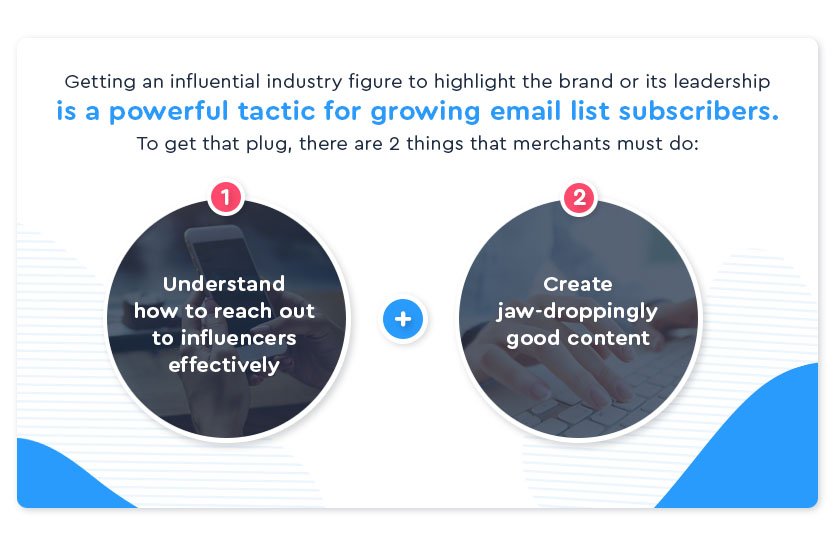
Therefore, getting an influential industry figure to highlight the brand or its leadership is a powerful tactic for growing email list subscribers. However, to get that plug in the first place, there are two things that merchants must do:
- Understand how to reach out to influencers effectively
- Create jaw-droppingly good content
If sellers can achieve these two aims, they can open the doors to a much broader audience and really help their brand to earn tons of new email subscribers and sales.
That said, if they aren’t creating anything noteworthy, it is best to circle back to the first tactic listed here and get to work producing some stunning blogs, videos and other content offerings that will help get them noticed.
Final Thoughts
Growing email list subscribers can be a challenging endeavor in the attention economy. Moreover, with the constant degeneration of email lists, retailers can feel like they are fighting an uphill battle.
That said, these are just some of the many ways that retailers can drum up new subscribers whom they can later convert into customers. However, a couple of the key takeaways that retailers should retain is that it is necessary to:
- Create the best content possible
- Make signing up easy
Understandably, that can be a lot easier said than done.
If your brand needs help growing email list subscribers and reaching a broader audience, support is available. Wpromote’s email marketing experts can build a custom email strategy for skyrocketing subscribers and keeping them engaged in the long term.
Reach out to us today and let’s get started transforming your email marketing efforts for the better.






Responses